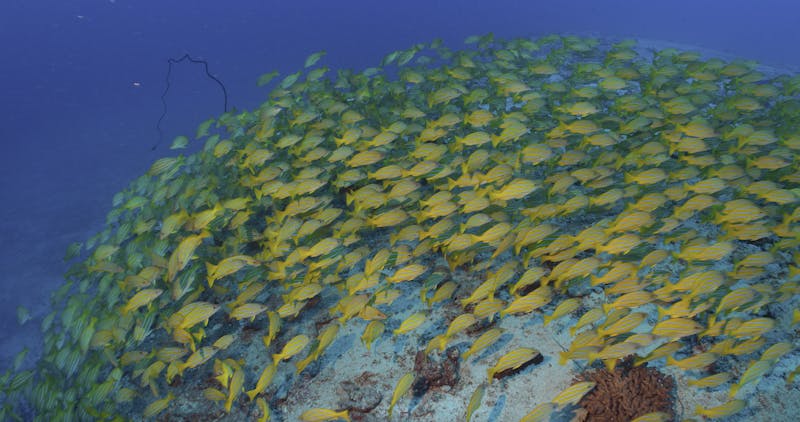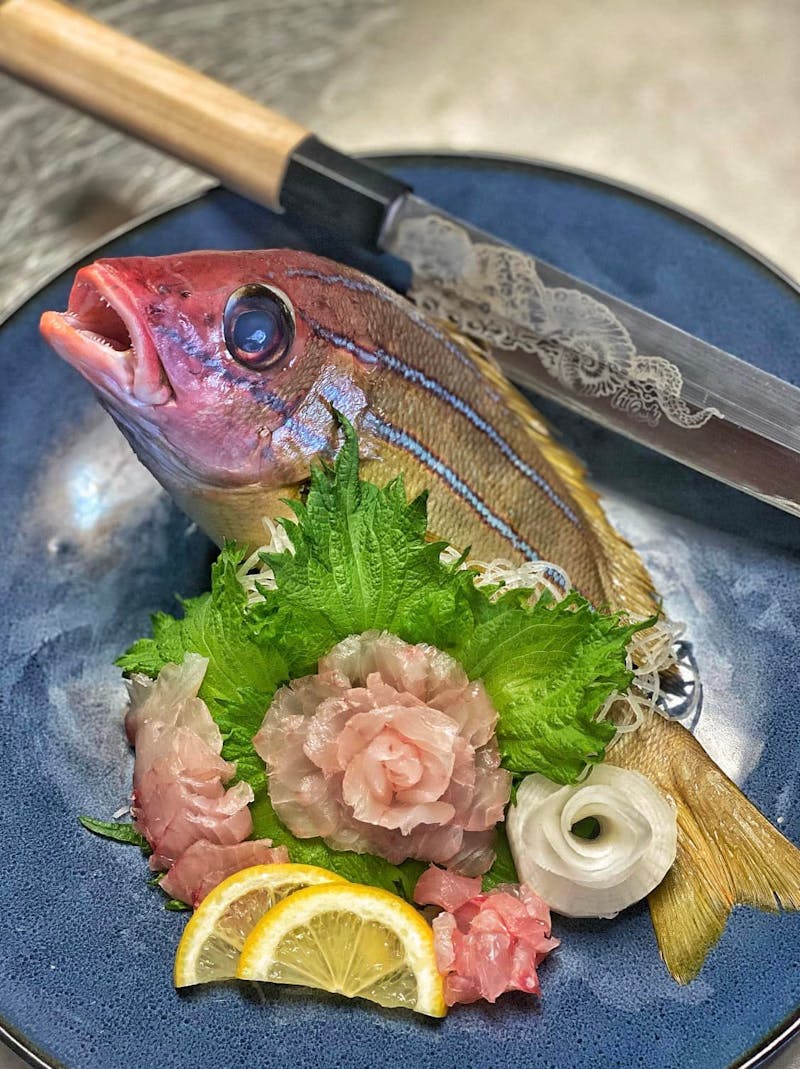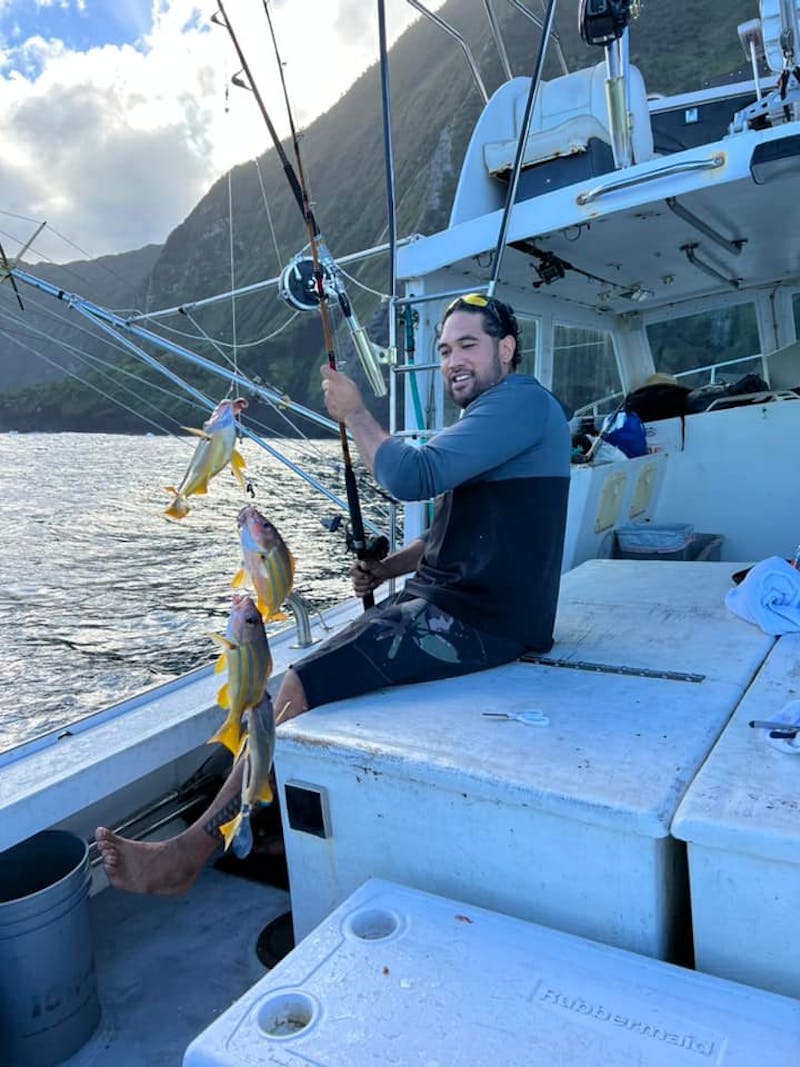On the Hawaiian Islands, the most remote archipelago on earth, seafood is a way of life.
Yet the islands have historically imported — at great cost — more than half of the seafood consumed there.
In a bid to decrease dependence on seafood imports, the government introduced several species of fish to the islands’ waters in the 1950s and 1960s — including a little bluestripe snapper known locally as taʻape.
It didn’t go according to plan.
“Little did they know the taʻape would become so abundant that it would spread throughout the entire Hawaiian archipelago,” said Jhana Young, who manages the Hawaiʻi-based sustainable seafood program at Conservation International. Once established, the ta’ape competed with native fish for food and disrupted the local fishing industry, she said.
In 2017, the most recent year for which data is available, invasive species cost the global economy US$ 162.7 billion in damages — from preying on crops to pushing native species from their habitats. Hawai‘i is considered by scientists to be one of the invasive species capitals of the world, with more than 5,000 non-native plants and animals that cost the state tens of millions of dollars each year.

A school of taʻape © Brian D. Greene
Now, local chefs are cooking up creative ways to increase the demand for taʻape in an effort to boost food security, support local fishermen and decrease pressure on native species.
Their strategy, Young says:
“Eat ‘em to beat ‘em.”
Invasive species recipes
A few years ago, one would have struggled to find taʻape on the menu of a single seafood restaurant in Hawai‘i.
“Taʻape are typically caught by accident and either thrown back or used as bait, which is why many fishermen perceive them as ‘trash fish’,” Young explained. “If they are kept, most local people will eat taʻape fried whole and topped with shoyu,” a type of soy sauce.
Conservation International Hawaiʻi partnered with Oʻahu-based nonprofit Chef Hui in 2020 to help local fishers, chefs, restaurant owners and seafood distributors flip the script and show that this pesky invasive can also be tasty.
As part of an ongoing effort to bring taʻape to tables across Hawai‘i, chefs from five local restaurants — in partnership with Conservation International and Chef Hui — hosted the Hawaiʻi Seafood Month campaign in October 2021, highlighting this electric-blue snapper as the main ingredient in their dinner services. With more than 100 people in attendance, guests enjoyed taʻape prepared in a variety of ways — formed into a fish cake, served ceviche-style with fresh citrus, or steamed and tucked away in a pasta.

Taʻape dish © Conservation International Hawaiʻi
“What else can we eat that is delicious, nutritious and affordable — and literally right there where you don’t need a deep-sea fishing vessel to catch it? That’s why I love taʻape,” said Lee Anne Wong, chef-owner at the Papa‘āina at Pioneer Inn in Maui and a former contestant on U.S. reality show “Top Chef.” “It has this very tender, white flaky texture that’s very similar to a lake fish.”
The movement to promote taʻape as a sustainable seafood option started with a series of online cooking demos hosted by local chefs Mark “Gooch” Noguchi and Kristene “Banchan” Moon. As part of the series, 25 local families received free taʻape to test their own skills in the kitchen. Now, more than 30 businesses and restaurants on the islands have committed to sourcing this invasive fish and there is a growing demand to put taʻape on menus.
“We are trying to build this movement to be more aware of our surroundings and environment and how fragile our ecosystem is — and what better way to do that than through the vessel of food?” Noguchi said.
From ocean to table
Chefs aren’t the only ones that could benefit from this new menu item. If ta’ape becomes more valuable on the market, local fishers would have greater incentives to catch them, stimulating the island economy and helping take pressure off other highly fished reef species.
“If we could get buy-in from upper levels — say hotels or restaurants — that could really showcase taʻape as one of their high dishes … that’s the way I think you are going to get the fishermen to come in,” said Adam Wong, a commercial fisher in Hawai‘i.
Connecting local fishing communities and restaurants could provide a steady source of income for the fishers, while ensuring a sustainable source of seafood for chefs, added Wong.
“Just knowing where your food is coming from … you can taste the difference,” Wong said. “[Diners] can feel good about the food because they know they are supporting our local economy and our local community.”
An added bonus: Buying and eating taʻape could help communities across Hawaii become self-sufficient rather than relying on imports — particularly during the pandemic. Since last year, the commercial harvest of taʻape has increased by 35 percent, according to the State of Hawai‘i Division of Aquatic Resources.

A fisherman with a taʻape catch © Bricyn Afong
Seafood with a cause
For Young, the concept of a diet centered around invasive species isn’t new.
“Growing up in Hawai‘i, I was constantly learning about invasive species and their impacts on our islands,” she said. “My father taught me how to hunt wild pigs and axis deer — both invasive — and now I eat them pretty much every week.”
A fisherman and artist, Young’s father painted a picture of a taʻape that he had caught and used for bait in the 1980s, she said. “Now it serves as one of my inspirations for this movement and a reminder of the deep-rooted fishing culture many of us share.”
Along with helping organize the cooking and dinner series, Young helped develop an augmented reality app and Instagram filters to show users what these invasive fish look like — and highlight ways to feature them in meals. Young also recently organized the first 3-month virtual statewide fishing and cooking challenge called the “Virtual Taʻape Throw Down” which awarded prizes to residents who collectively submitted over three dozen dishesmade with caught or bought taʻape.
“More and more, people are prioritizing sustainability and a connection to the food they eat,” Young said. “This initiative is focused on getting locals and visitors in Hawai‘i excited about eating taʻape as a delicious way to boost local food security, support local fishers and restore our ocean resources."
This project is funded by an award from the National Oceanic and Atmospheric Association (NOAA) Saltonstall-Kennedy Grant Program.
Kiley Price is the staff writer and news editor at Conservation International. Want to read more stories like this? Sign up for email updates here. Donate to Conservation International here.
Cover image: A school of taʻape(© Brian D. Greene)
